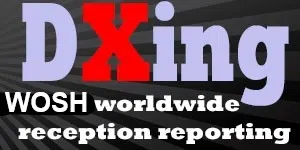Coast Guard command officers report the agency’s illicit narcotics enforcement Operation Pacific Viper has pulled in 50 tons of cocaine captured from smuggling operations since early August.
The Guard’s post on X proclaimed, “This is owning the sea.”
The maritime enforcement was carried out with support from unnamed “partners and allies.”
The confiscations represent a significant impact on the U.S. drug market.
Using the latest UNODC Global Cocaine Report 2023 data, U.S. cocaine consumption is estimated at roughly 150 to 200 metric tons of pure cocaine per year, averaging out to about 180–220 grams annually per active user.
That’s nearly triple the per-person consumption suggested by the older 2016 RAND model, reflecting both higher frequency and purity in recent years. At that rate, a single user goes through about 16 to 17 grams each month, which scales to about 1.7 metric tons per month for every 100,000 users.
By that measure, the 50 tons (100,000 pounds) of cocaine intercepted by the U.S. Coast Guard in the Pacific since August equates to roughly a quarter of America’s entire yearly demand — or enough to supply 100,000 average users for more than two years.
Put differently, it represents three to four months of national consumption at current usage levels.
The data emphasize how significant the Coast Guard’s maritime seizures are in putting a measurable dent in total supply.
The Coast Guard social media post said the current government shutdown has not affected its work on the high seas.
“Despite the lapse in appropriations, our maritime fighting force continues to combat narco-terrorism,” it said.
Coordinating drug interdiction operations requires extensive cooperation among U.S. and international agencies. The Joint Interagency Task Force South, operating under U.S. Southern Command in Key West, Florida, is responsible for detecting and tracking both air and maritime drug trafficking activity.
When an interdiction is initiated, operational control shifts to the U.S. Coast Guard, which conducts the law enforcement phase that includes pursuit, boarding, and apprehension. In the Eastern Pacific, these operations are carried out under the authority of the Coast Guard’s Pacific Area Command, headquartered in Alameda, California.
Rear Adm. Jeffrey Novak, deputy commander of U.S. Coast Guard Pacific Area, said in a release that, “When we say the Coast Guard is accelerating counter-narcotics operations, we mean it.”
“Alongside our partners and allies,” said the admiral, “our maritime fighting force is scouring drug smuggling routes in the Eastern Pacific and dismantling narco-terrorist networks.”
© 2025 Newsmax. All rights reserved.










